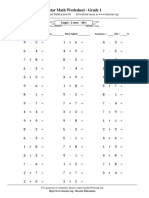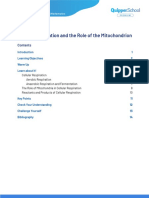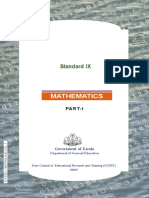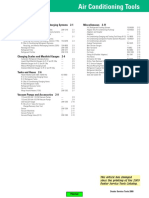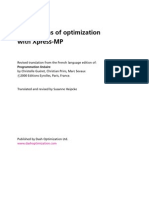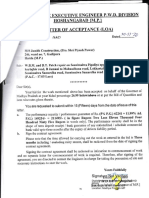Introduction to Machine Learning
Week 12
Prof. B. Ravindran, IIT Madras
1. (1 Mark) What is the VC dimension of the class of linear classifiers in 2D space?
(a) 2
(b) 3
(c) 4
(d) None of the above
Soln. B - Any 3 points can be classified using a linear decision boundary
2. (1 Mark) Which of the following learning algorithms does NOT typically perform empirical
risk minimization?
(a) Linear regression
(b) Logistic regression
(c) Decision trees
(d) Support Vector Machines
Soln. D - Refer to the lectures
3. (2 Marks) Statement 1: As the size of the hypothesis class increases, the sample complexity
for PAC learning always increases.
Statement 2: A larger hypothesis class has a higher VC dimension.
Choose the correct option:
(a) Statement 1 is true. Statement 2 is true. Statement 2 is the correct reason for statement
1
(b) Statement 1 is true. Statement 2 is true. Statement 2 is not the correct reason for
statement 1
(c) Statement 1 is true. Statement 2 is false
(d) Both statements are false
Soln. B - Refer to the lectures
4. (1 Mark) When a model’s hypothesis class is too small, how does this affect the model’s
performance in terms of bias and variance?
(a) High bias, low variance
(b) Low bias, high variance
(c) High bias, high variance
(d) Low bias, low variance
Soln. A - Refer to the lectures
1
�5. (1 Mark) Imagine you’re designing a robot that needs to navigate through a maze to reach a
target. Which reward scheme would be most effective in teaching the robot to find the shortest
path?
(a) +5 for reaching the target, -1 for hitting a wall
(b) +5 for reaching the target, -0.1 for every second that passes before the robot reaches the
target.
(c) +5 for reaching the target, -0.1 for every second that passes before the robot reaches the
target, +1 for hitting a wall.
(d) -5 for reaching the target, +0.1 for every second that passes before the robot reaches the
target.
Soln. B - The +5 reward for reaching the target encourages goal achievement, while the -0.1
penalty for each second promotes finding the shortest path. Omitting rewards for hitting walls
as question has nothing in this regard.
For the rest of the questions, we will follow a simplistic game and see how a Reinforcement
Learning agent can learn to behave optimally in it.
This is our game:
At the start of the game, the agent is on the Start state and can choose to move left or right
at each turn. If it reaches the right end(RE), it wins and if it reaches the left end(LE), it loses.
Because we love maths so much, instead of saying the agent wins or loses, we will say that the
agent gets a reward of +1 at RE and a reward of -1 at LE. Then the objective of the agent is
simply to maximum the reward it obtains!
6. (1 Mark) For each state, we define a variable that will store its value. The value of the state
will help the agent determine how to behave later. First we will learn this value.
Let V be the mapping from state to its value.
Initially,
V(LE) = -1
V(X1) = V(X2) = V(X3) = V(X4) = V(Start) = 0
V(RE) = +1
For each state S ∈ {X1, X2, X3, X4, Start}, with SL being the state to its immediate left and
SR being the state to its immediate right, repeat:
V (S) = 0.9 × max(V (SL ), V (SR ))
Till V converges (does not change for any state).
What is V(X4) after one application of the given formula?
2
� (a) 1
(b) 0.9
(c) 0.81
(d) 0
Soln. B -
V (X4) = 0.9 × max(V (X3), V (RE))
V (S) = 0.9 × max(0, +1) = 0.9
7. (1 Mark) What is V(X1) after one application of given formula?
(a) -1
(b) -0.9
(c) -0.81
(d) 0
Soln. D -
V (X1) = 0.9 × max(V (LE), V (X2))
V (S) = 0.9 × max(−1, 0) = 0
8. (2 Marks) What is V(X1) after V converges?
(a) 0.59
(b) -0.9
(c) 0.63
(d) 0
Sol. A - This is the sequence of changes in V:
V (X4) = 0.9 → V (X3) = 0.81 → V (Start) = 0.729 → V (X2) = 0.656 → V (X1) = 0.59
Final value for X1 is 0.59.


























